10 Big Bank Marketing Lessons from the ABA Bank Marketing Conference
Last week, the American Banking Association (ABA) held its annual Bank Marketing Conference in Denver, receiving rave reviews. The theme was – developing your marketing superpowers. Amid the brewery networking, superhero costumes, and fun, some fantastic bank marketing lessons were had, and not just for bank marketers. The theme was how marketing needs to be better integrated into all facets of the bank, from data to talent acquisition, but how other lines of business can benefit from learning marketing. Below are ten important lessons that EVERY banker should know.
Bank Marketing Lesson 10: Increase Marketing Budget for 2023
One of the most talked about subjects was what should be the overall marketing budget and what an optimized marketing budget should look like by channel. This is the power of networking at these conferences, as you can collect insights that you can’t do over video conferences.
Most banks will target around 6% of revenues next year for their marketing budget, and banks with strong brands and marketing programs target above 7%. The top part of this range seems to be around 10.5%. It was agreed that too many lines of business, such as treasury management, commercial lending, and commercial deposits, are not utilizing their marketing departments enough, given the tremendous value of their products. With rates rising and the cost of funding pressure mounting, a common theme was to spend more resources capturing small business and corporate deposits.
Another popular tactic was that since many banks are ahead of budget this year due to the faster than anticipated rise in margins, many banks are increasing spend on technology and marketing in the back half of this year to set themselves up for success in 2023.
We brought back tons of bank input on budget allocations, so look for a future article on how banks plan to spend their marketing budgets next year.
Bank Marketing Lesson 9: Goal Setting – A Common Theme
Many sessions discussed the importance of setting clear goals for any marketing effort, such as the talk by Jessica Reese (graphical notes below), the Social Media Manager for Arvest Bank (AR, $27B). All involved in any marketing effort should understand if it is about branding, sales funnel acquisition, funnel movement, conversion, or retention. Everyone should be clear of the persona they are going after and have specific, measurable, attainable, relevant, and time-based (SMART) goals around any effort. In this manner, marketers can iterate and improve. Further, having clarity not only helps focus the effort but helps track performance. While this lesson sounds evident, most banks do not set and track clear goals for their marketing efforts.
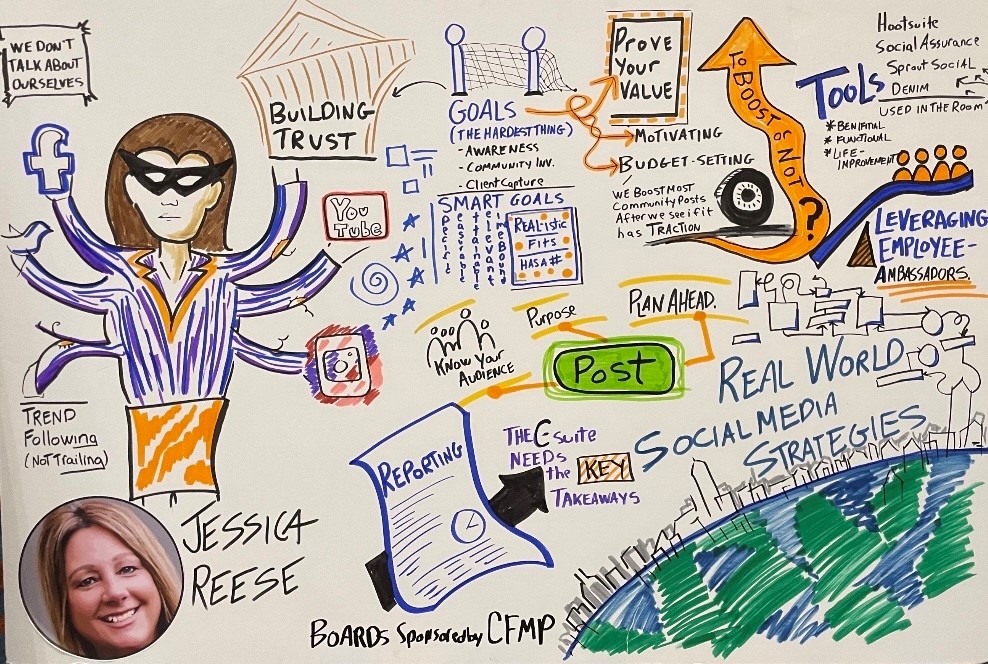
Bank Marketing Lesson 8: Crypto, Blockchain, Digital Assets, and NFTs
There were two educational overviews to help bankers better understand the current state of crypto, blockchain, digital assets, and NFTs in banking. Casey Christopher, Chief Empowerment Officer at Quontic Bank (NY, $835mm), and Brooke Ybarra, VP of Innovation Strategy at the ABA, provided bankers with a working knowledge of the current regulatory environment and how each technology works.
Both ladies detailed the tremendous opportunity, potential fintech partners in this space, and the risks. Both speakers presented the bulk of the opportunity to start around custody of these digital assets and then crypto rewards products and lending against such assets.
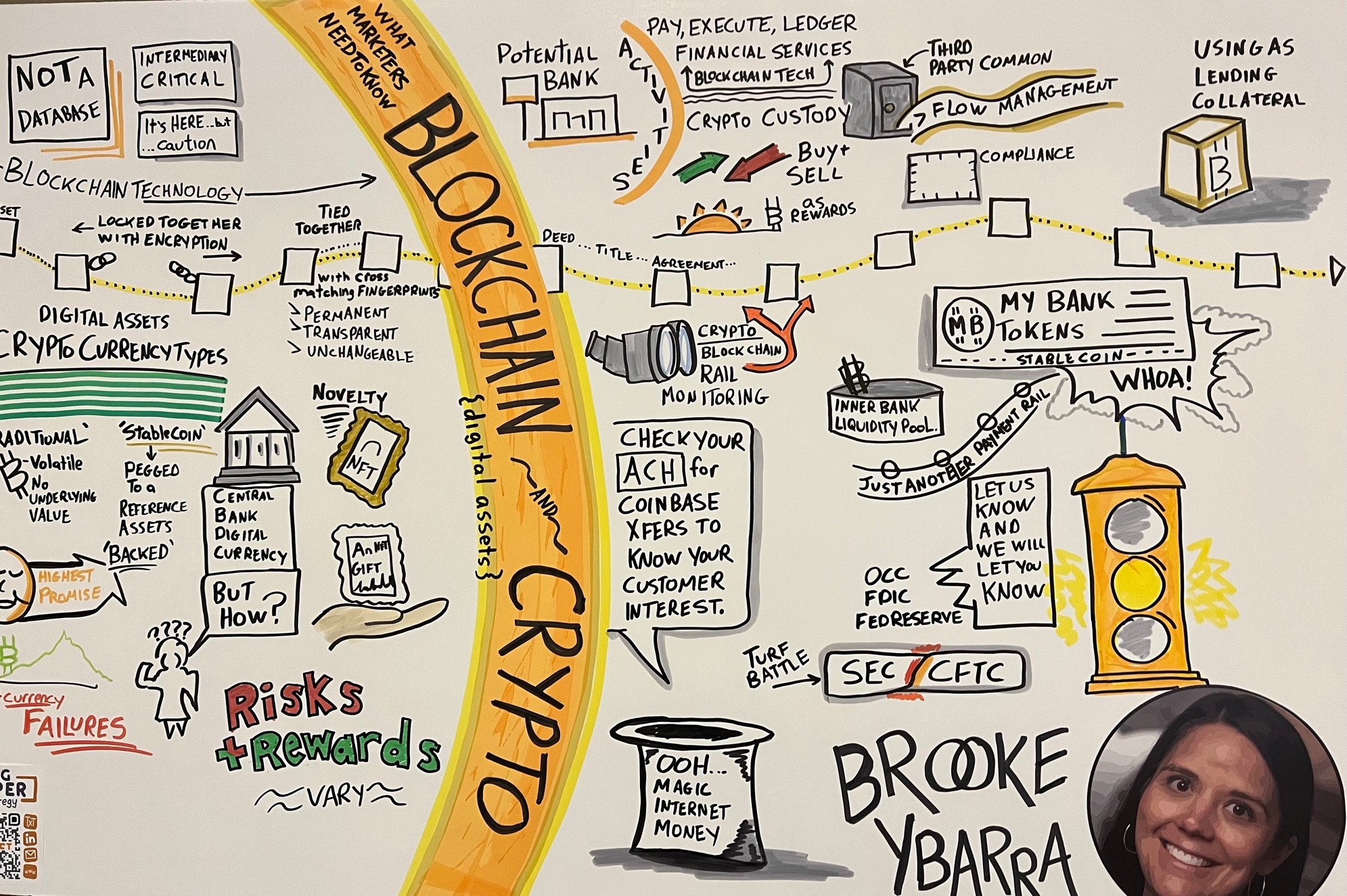
Bank Marketing Lesson 7: Multicultural Marketing
David Femi, the head of Multicultural Banking at M&T (NY, $203B), and Tony Oum, EVP at FirstBank (CO, $29B) and head of their Multicultural Banking Center, discussed (graphic notes below) the many benefits of multicultural banking as our society gets more diverse.
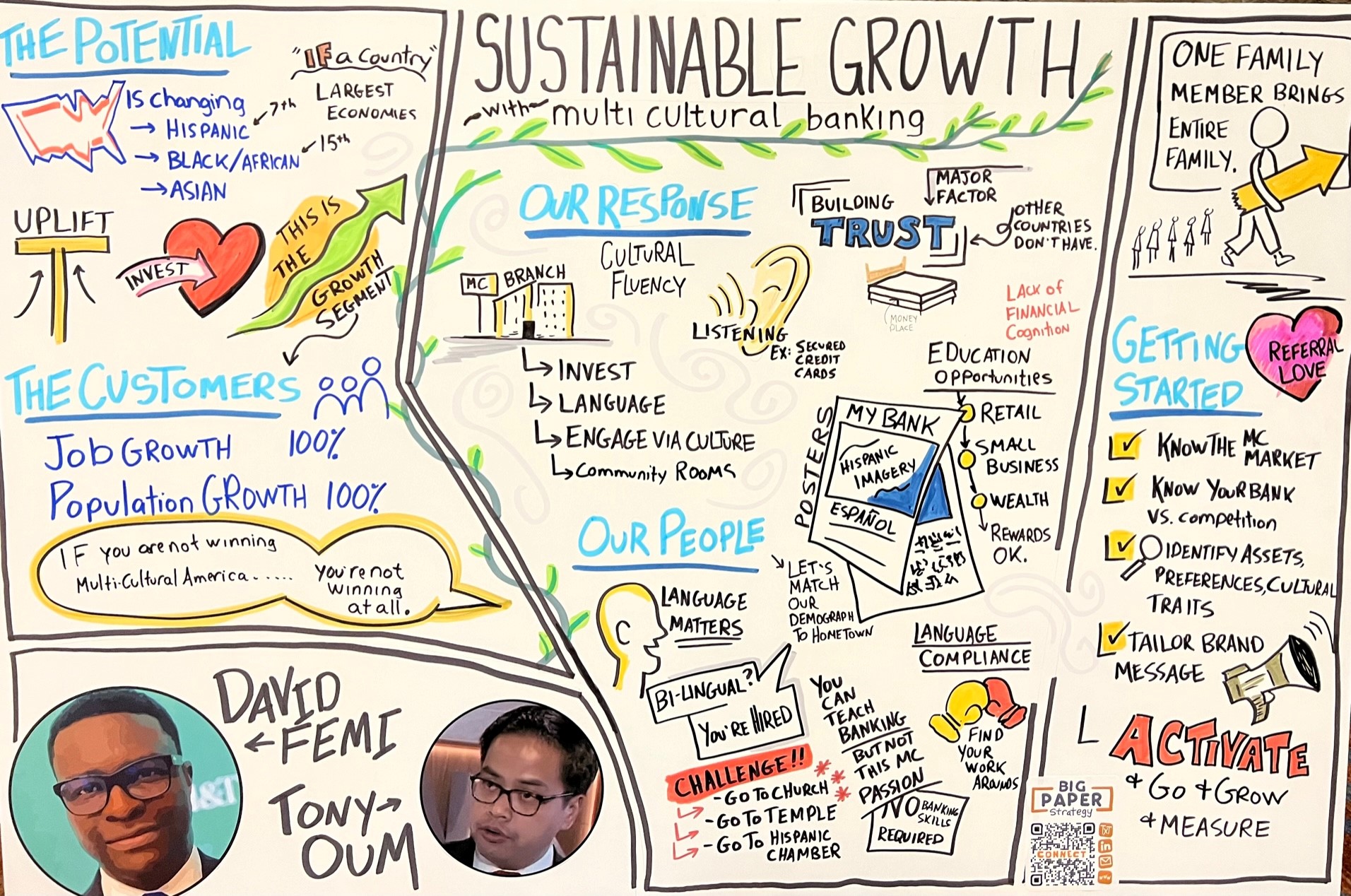
They laid out a roadmap of cultural fluency that looks like the below five steps:
- Determine the growth rate and target market share for each sector of your multicultural efforts. Get a companywide commitment to reach those goals.
- Conduct a gap analysis of your institution, goals, and competitors. What skills and resources do you need to achieve diversity? These resources should include the ability to understand the target cultural and language and the ability to tailor marketing.
- Access the attitudes, preferences, and cultural traits of multicultural customers and prospects.
- Map a path to how your brand can connect to each group, including language, graphics, and talent.
- Link insights to all community banking growth strategies and market activation so that multicultural banking becomes ingrained in all products, services, and marketing and is not a standalone effort.
This effort looks like more multicultural events, targeted education, and tailored products for both banks. M&T provided a good example, such as their BOSS product below:
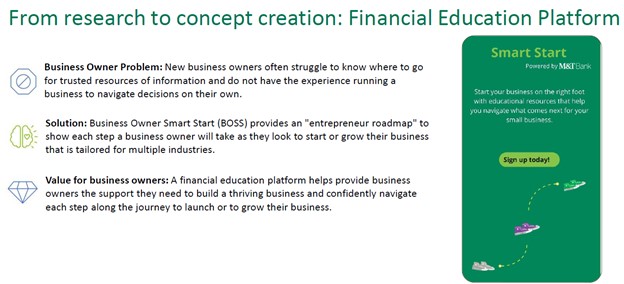
Bank Marketing Lesson 6A: Using Third-Party Data – The Difference Maker in Targeting and Personalization
We are not sure this should be in the Top 10, but since we gave this talk, we decided to include it. Here, we discussed how if a bank is willing to comply with the intent of the CA Privacy Protection Act (CCPA), then we showed how we purchase some 3,000 data points on some of our customers and then take that data to form look alike audiences.
We detailed the cost of this is about $155 per 1,000 data elements, and provided a list of companies to use. We then go out and purchase further data on non-customers that we desire and then build a campaign around the targets. This is the opposite of mass marketing, as we can get personalized on a 1:1 level and jump our marketing lift by 143 times. Since we are targeting not only profitable customers but also customers we want (and understand) and customers that are likely to convert on a cumulative lifetime value basis, our marketing lift is approximately 889X from just buying a customer list and mass emailing.
Here, look for a more in-depth article in the near future.
Bank Marketing Lesson 6B: Building a Data-Driven Marketing Culture
Sticking with our data lessons, Allison Sagraves, M&T’s Chief Data Officer (and 3x Global Data Power Woman), talked about the importance of understanding the customer through data. More important than what customers tell you is what they do, as evidenced by the data. Allison laid out a plan (graphic notes below) and stressed obtaining a 360-degree view of the customer through data.
Within any bank’s customer set, approximately 15% of the customers represent 60% to 70% of the cheapest revenue expansion opportunity a bank can have. This is where banks should be looking at the data for clues to gather deposits. Within that 15%, 65% of those customers likely moved money out of your bank to other banks and investment providers. Conversely, 67% of balances are possible at other banks and investment providers and have never seen your bank. These two aspects represent an enormous marketing opportunity for most banks.
Similarly, it is likely that 15% of your bank customers also have other 50% of credit products at other institutions. Allison stepped through equal opportunities in small business and wealth.
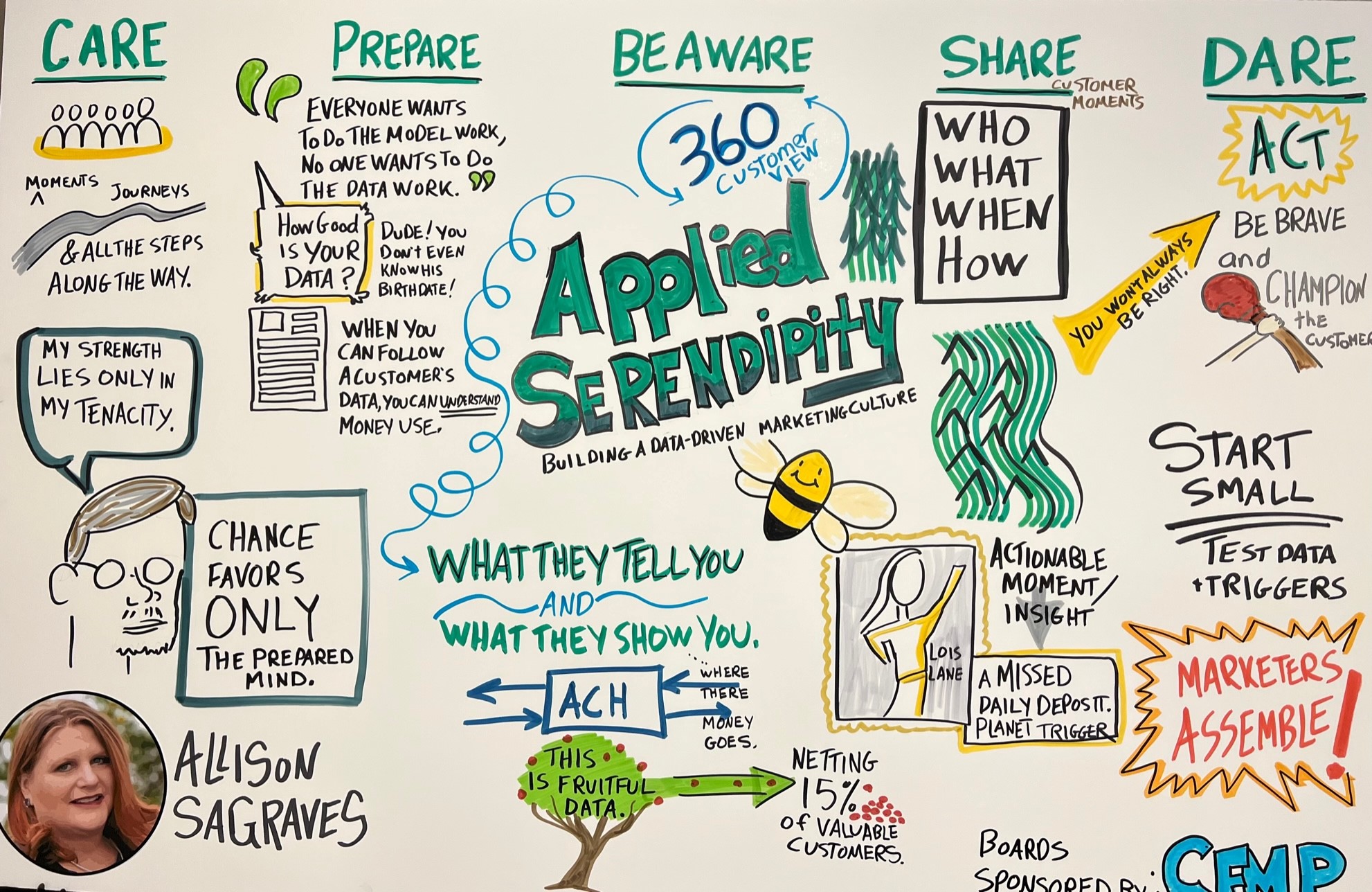
Bank Marketing Lesson 5: Sports Marketing
This is a prototypical session if you come to a conference to save you time in the future and learn new ideas. This panel led by Matt Yoman, President of Tigris Sponsorship and Marketing; Jenny Olson, Community Engagement Officer at MidWestOne (IA, $6.5B); and Shelley Regin, SVP of Marketing for Country Bank (MA, $1.7B), unveiled how to best leverage the new “name, image and likeness” (NIL) movement for banks and discussed bank sports marketing in general.
These marketers discussed how sport venue naming rights or athletic influencers can amplify a bank’s brand, target an audience, and tie the bank closer to a community. The interesting part of this session was how these banks used sports marketing as a creative avenue for other projects. For example, MidWestOne not only uses NIL athletes for social media but has their athletes come with them to teach financial literacy in the community.
The audience learned from these banks’ mistakes and successes. We learned that a bank embracing this strategy can consume about 15% of the marketing budget. For every dollar of direct investment, banks should be prepared to allocate another $0.25 on the dollar for indirect investment to support the effort.
Additional advertising, events, and promotional materials/giveaways are all typical.
For NIL athletes, in particular, banks take a risk that the athlete does not live up to its brand plus, due to legality, it is difficult to tie a contract to performance such as maintaining athletic status on the team or even being enrolled. Further, banks also need to understand the risk of being found offside with potentially new legislation that could make it illegal for alumni and other groups to lure athletes to a school through NIL payments. While banks likely do not have that intent, their deep pockets make them vulnerable. Thus, banks would be wise to keep payments small and immaterial for athletes that are being recruited to a school.
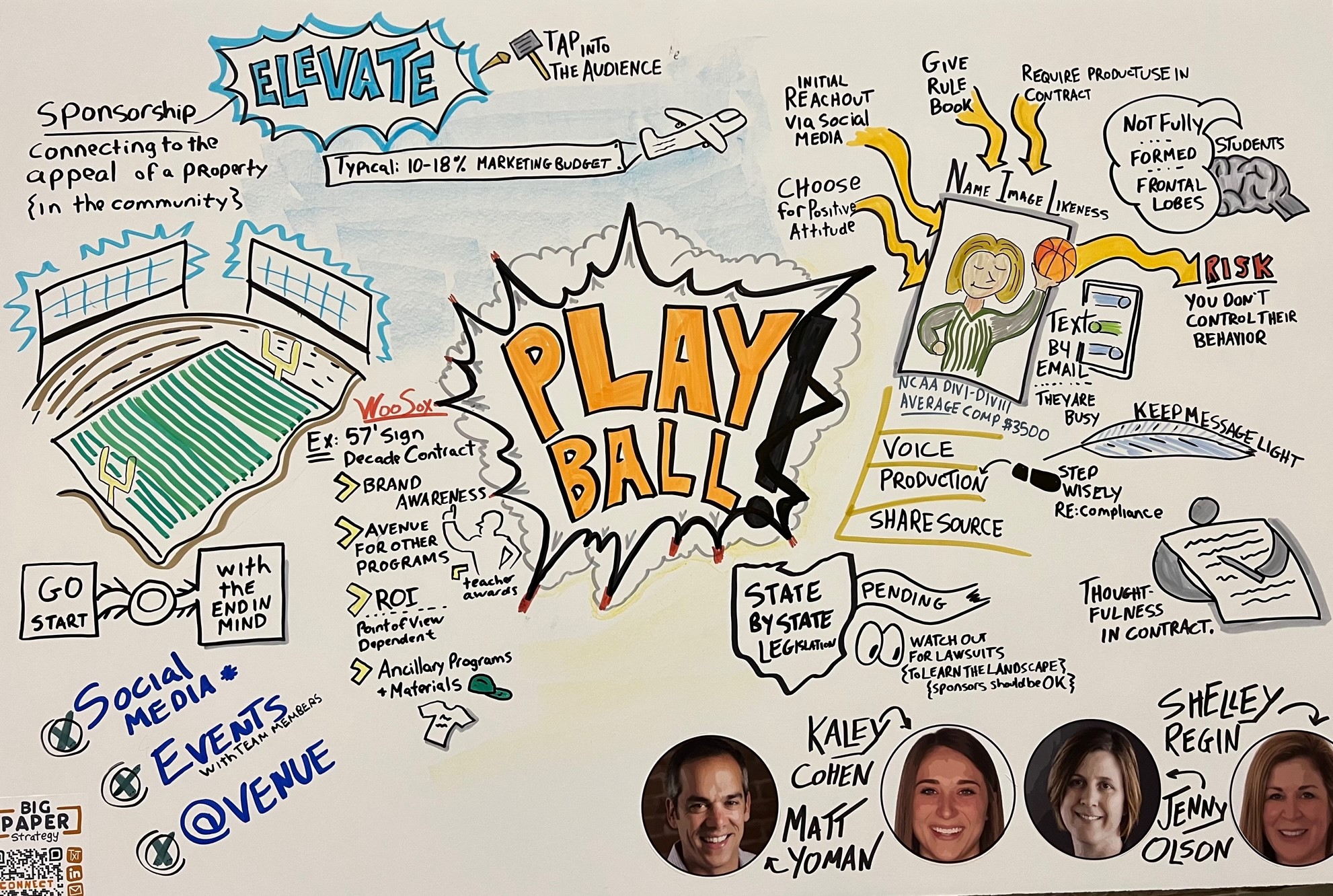
Bank Marketing Lesson 4: Empowering Marketers
In a session focused at women but applicable across the organization, Natalie Bartholomew (aka The Girl Banker) and Community President at First Community Bank (AR, $2.1B); Kimberley Kaschke, Director of Marketing Strategy and Planning at FNB of Omaha (NE, $31B); and Karen Partee, CMO at Texas B&T (TX, $4B), presented a rousing panel (graphic notes below) on how marketers need to learn the c-suite lingo, lead with ROI, get involved in product design, be ready for change, and continue to learn new skills.
In short, everyone learned what marketing can do during the pandemic, now is the time to be assertive and better integrate marketing in the highest decisions of the bank.
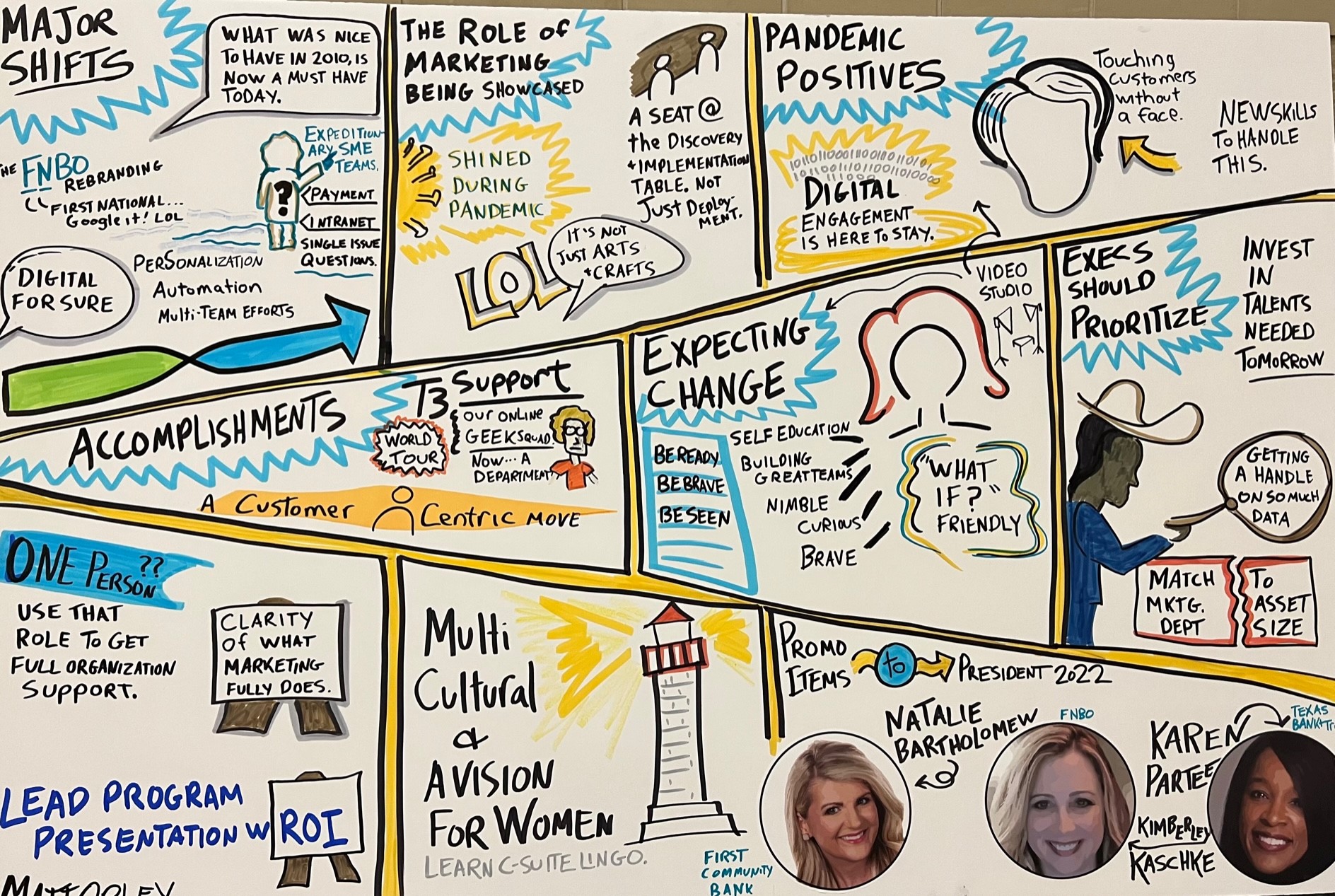
Bank Marketing Lesson 3: Creating Timeless Bank Products
Ryan Holiday, former Director of Marketing for American Apparel and best-selling author, discussed how banks can “chase the timeless in the timely.” He made an interesting point – “boring companies pay a premium.” That is, for banks that don’t spend money on marketing to differentiate themselves and don’t create unique products that create a fanatical customer base, their market capitalization will suffer over time, and they will “pay” more.
Like ourselves, Ryan is a big fan of writing a press release before your start a project and then working backward to create products and services that can span decades, not fads. Ryan encouraged bankers to break new ground and create products that uniquely utilize a “blue ocean” strategy for at least part of the portfolio of products. Every bank product manager should be clear on what their product is, what it is used for, and who will use it.
Ryan also showed some unique ways how he, and other brands, generated media and word-of-mouth through nothing more than creativity.
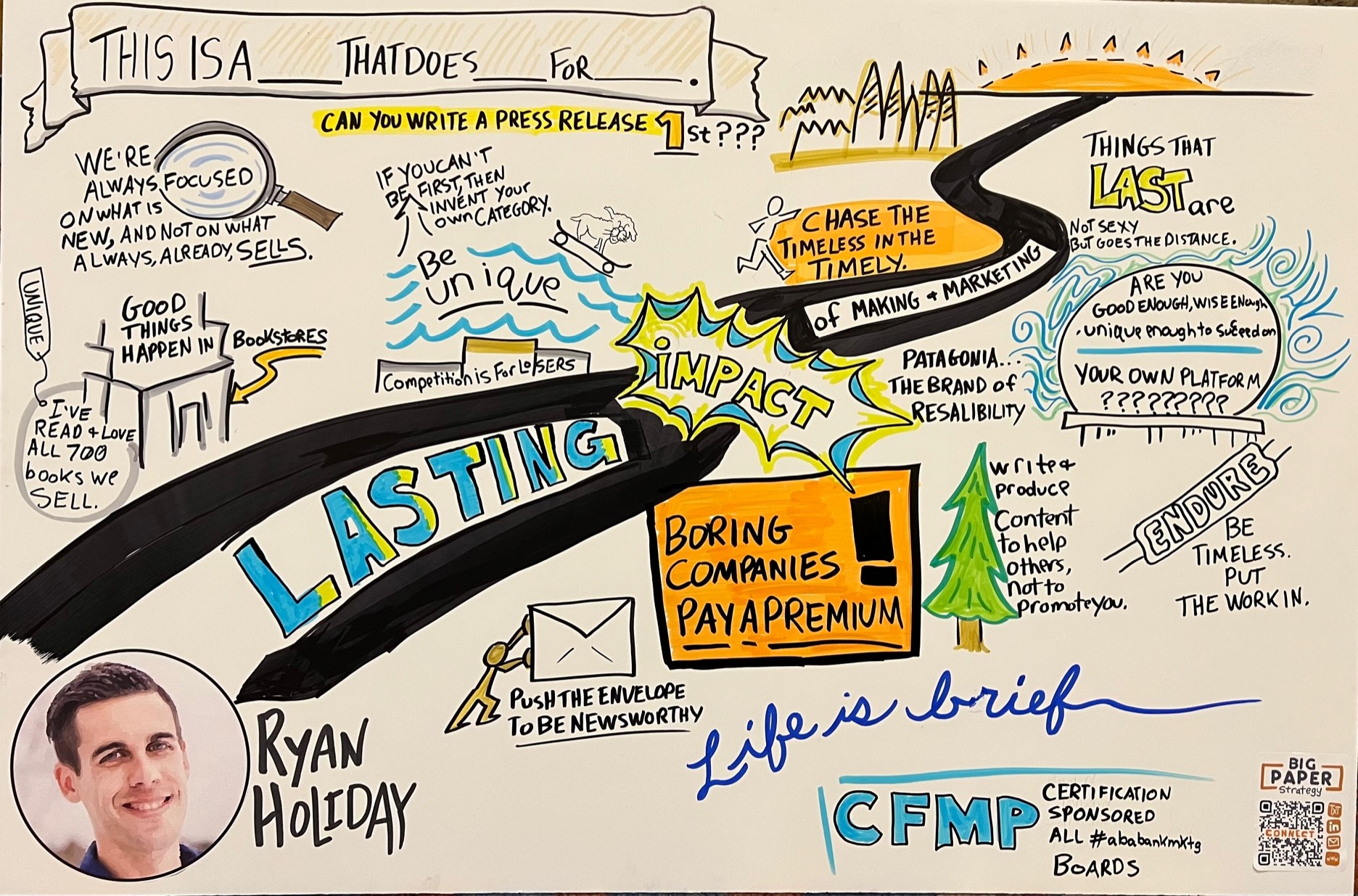
Bank Marketing Lesson 2: Incorporating Behavior Science into Banking Products
In his talk on Designing for Behavior Change, Matt Wallaert, the President of BeSci.io, encouraged bankers to create “behavior statements” about their products and efforts. A behavior statement is a precise sentence that details which you want to influence, when you want to influence them, and what behavior you want to elicit. From there, you want to understand and codify what pressures will help promote the desired behavior and what pressures will inhibit the behavior. From there, you want to amplify the promoting pressure and remove the inhibiting behavior.
The session discussed how banks, because of their trust and alignment with money, are in a unique position to change behavior when it comes to financial decisions and that we don’t design products well enough to optimize our effectiveness.
Matt gave us a roadmap to create a behavior statement, validate the statement through observing customers, design a product or service that changes behavior and then test that product to see if it needs to be further refined.
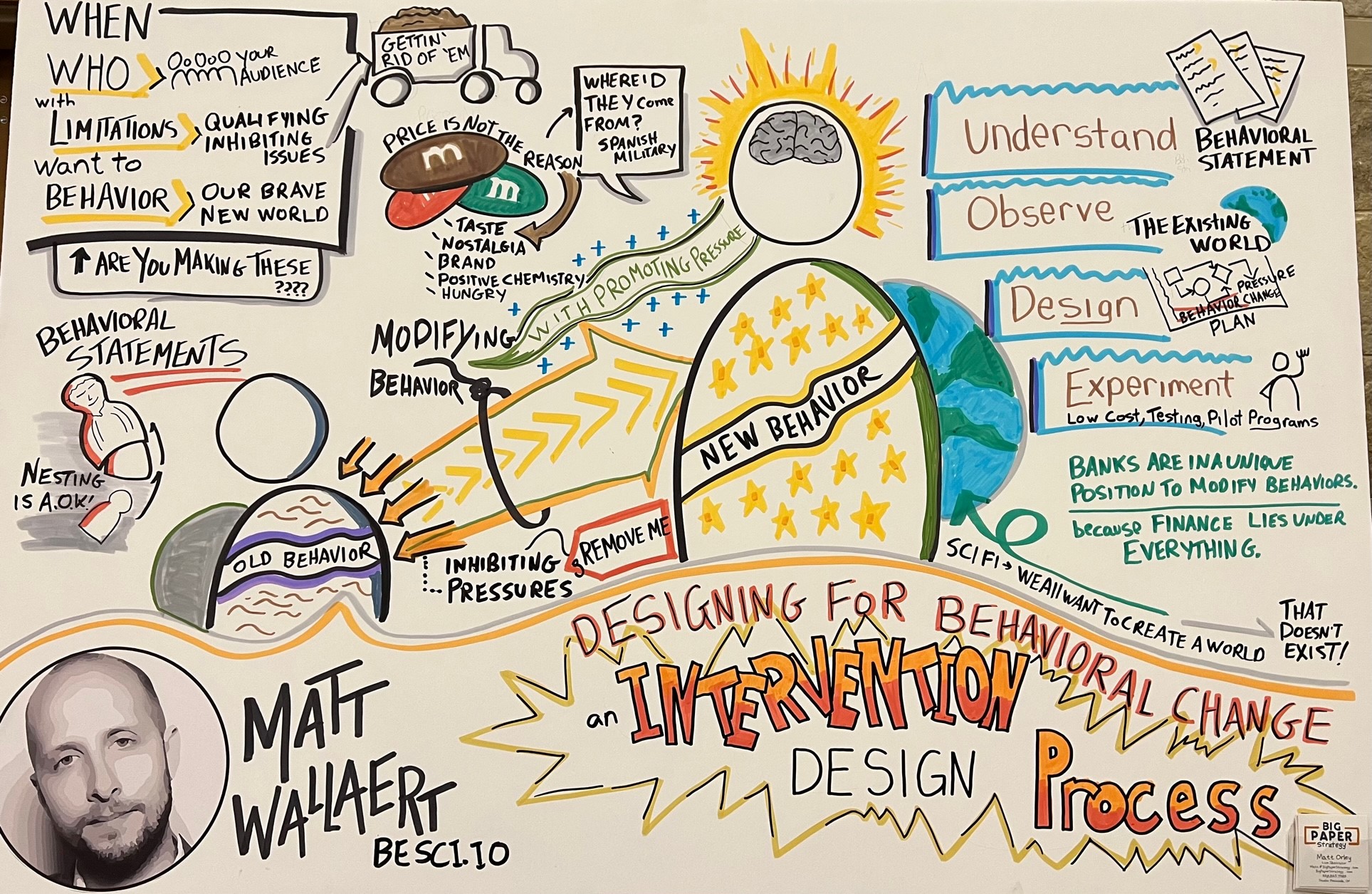
Bank Marketing Lesson 1: Winning The War on Talent
Almost every bank at the conference had talent acquisition and retention as their top three priorities for next year. This is why the talk by Johnny C. Taylor, Jr., the Society for Human Resources (SHRM) CEO, was critical. Johnny highlighted all the changes in the workforce since 2020 and then discussed ways to attract and maintain talent.
Winning the talent war starts with getting cultural clarity about your bank and what they stand for. Talent acquisition then means making your policies, hiring, and employee structure flexible enough to handle the new hybrid work environment being very clear on what jobs need to be done in the office and what can be done remotely. It was pointed out that one of the biggest challenges at banks for remote work is that few managers have ever led remote teams, and most have never been trained.
Winning talent means thinking about talent in new ways and being able to leverage contract workers, part-time workers, and full-time workers on limited projects. It means doing a better job with more frequent check-ins, mental wellness support, and more frequent communication.
Attracting talent also means getting your compensation structure right to keep up with inflation. It means spending (and receiving) more on your bank’s investment in skill and career development. It means refining your onboarding process to be able to handle more remote onboarding. Employee onboarding has radically changed during the “Great Reset” and now includes a restructured process with more touchpoints, such as an assigned mentor, and sessions to introduce the employee through their organizational structure.
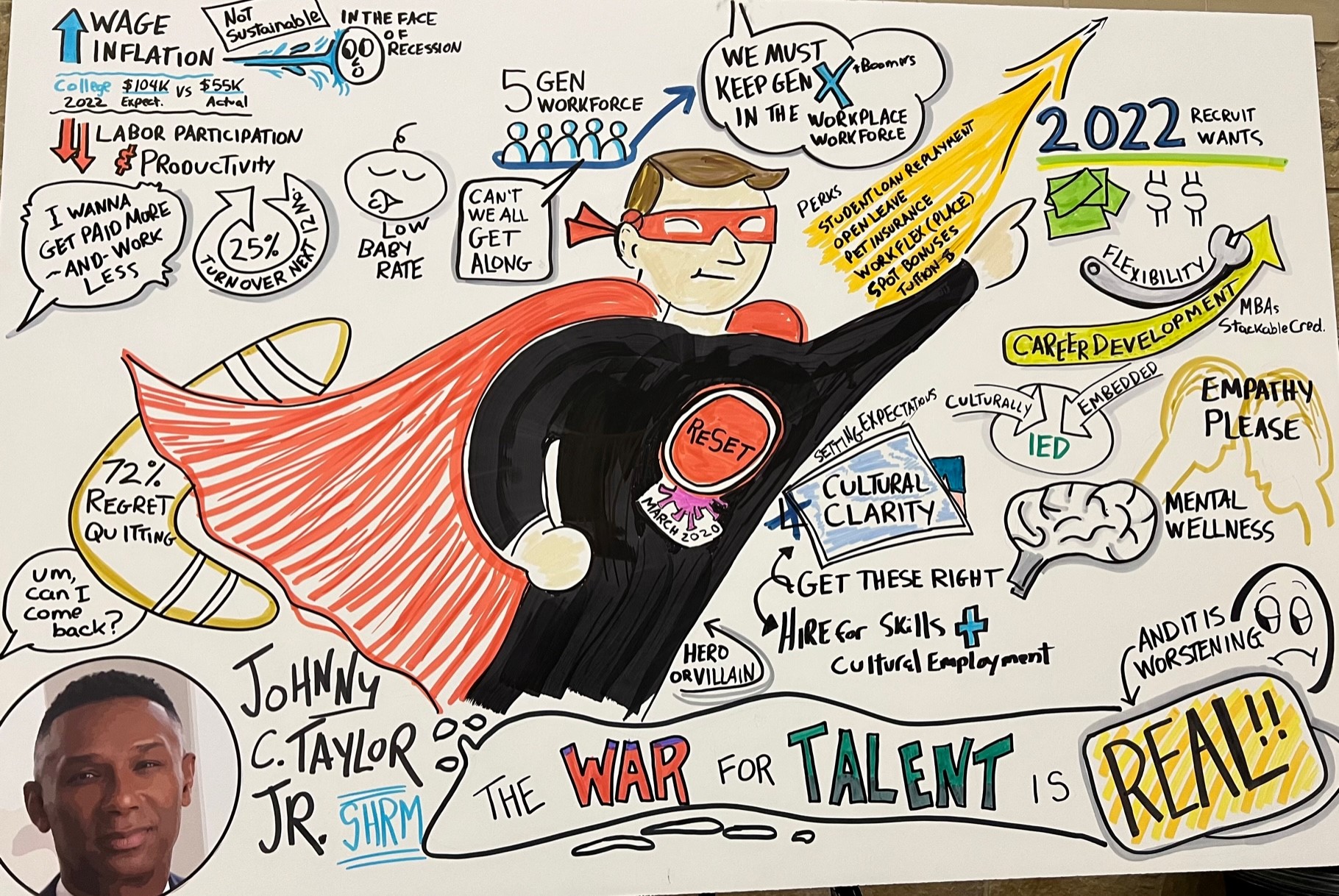
Next Steps
These are just some of the many bank marketing ideas learned during ABA’s Bank Marketing Conference. The annual ABA Bank Marketing Conference was a fantastic showcase of insights, case studies, and networking opportunities. More than 13 sessions were recorded and can still be purchased (HERE). The date and time for next year’s conference have not been announced, but any banker, not just bank marketers, would benefit from attending, so be sure to include the $800 cost plus travel in your budget.
Marketing is so important in banking yet underutilized on several fronts. Every banker has and needs to further develop their marketing superpowers.

